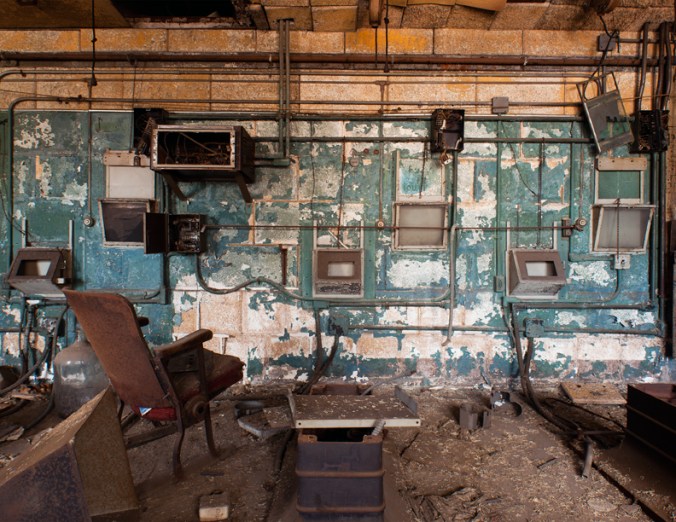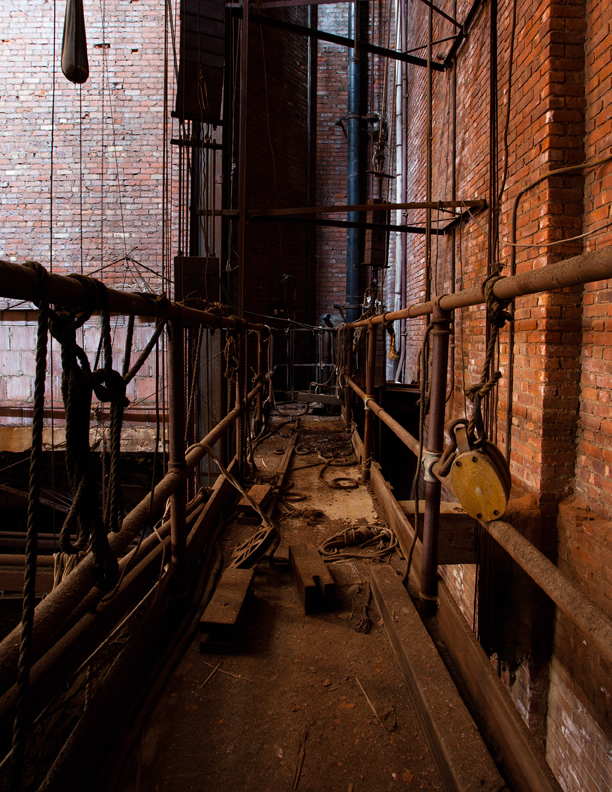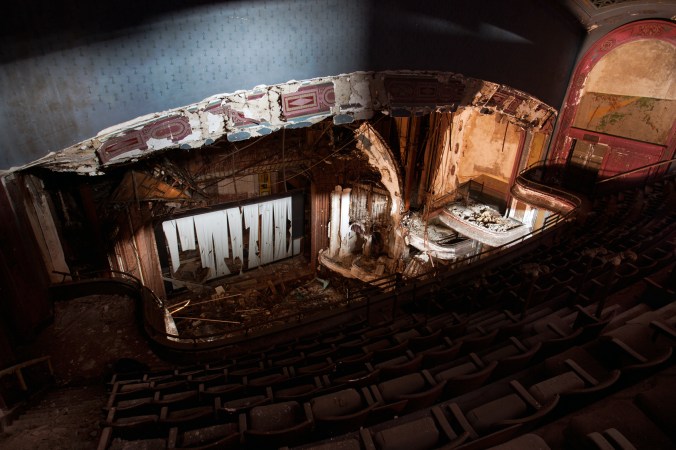RKO Proctor’s Theatre opened in Newark, NJ on November 25, 1915 as the Proctor’s Palace Theatre. The architect was John W. Merrow, the nephew of Proctor theater circuit owner Frederick F. Proctor.
The Palace was a double decker theater, which meant that one auditorium was stacked on top of the other, a rare design choice at the time. The lower, street-level auditorium had 2,300 seats and the upper had around 900. The space was among the largest and most open in the area, leading the city to use it as the site of it’s 250th anniversary celebration in 1916.
Originally, the Palace was a vaudeville theater. The theater eventually switched over to exclusively movie showings, but the occasional vaudeville show — such as Bela Lugosi’s“Horror and Magic Show” — still played there.
Shortly before his death in 1929 F.F. Proctor sold his company to Radio-Keith-Orpheum Corporation (“RKO”), and the name of the theater was changed to RKO Proctor’s Theatre.
The Palace was closed in 1968 when RKO merged with Stanley Warner, who owned Newark’s larger and more profitable Branford Theater. The lobby has been renovated and is currently used as a shoe store. The rest of the building remains vacant and after years of neglect has started to collapse.









Incredible stuff, thank you for sharing!
Great as usual. That place looks dangerous to be walking around in though!
What an astounding body of work you’ve compiled. This series of photos is just incredible, and I love the accompanying blog entry for it. I agree with ArcAngel, though, this work looks to be incredibly dangerous!! But regardless, if not for you photographing all this, the entire block of history would soon just be a whispered tale… I am so happy I found you on Twitter and really look forward to your posts. Great work.
Pingback: Proctor’s Palace Roof Theatre | After the Final Curtain
Incredibly sad. It was probably magnificent back in the day.
I have a fascination with old theaters. I don’t know why. Everytime I see evidence of a former movie house I get a lump in my throat. It’s so sad to see so many now doing time as supermarkets or cheap bargain stores. I went to see the Adams in Newark and asked if I could take pictures but I was sent away.
I’m the same way. I’m constantly pointing out places that used to be theaters to my friends. The Adams is a tough one, hopefully one day they’ll let people take a look at what is left.
Jose,
I share your though’s and feelings, not only for those palace called theaters, but for the old buildings as well, they have such a magnificent art all over and is so sad for me tho see many of them abandoned they should restore them but not to be used as a swap meet or cheap stores, how bout as a dance, music or art school.
I wish I where millionaire to buy as many as I could and restore them to their original magnificence.
I like your blog, I’ve seen many of your posts and it’s incredible how many abandoned theaters there are. Great to imagine how they looked like when they weren’t abandoned. Very entertaining!
I went to these theaters years ago and they were palaces, not like the cookie cutter theaters of today. It saddens me to see these buildings today. If you see what business are in front of these buildings now, you’ll really be sad. At least we can go to the Lowes in Jersey City and experience what a classic movie house was like.
I remember going to the Branford, Paramount, Loews and the Adams Movie Theaters as a child. The popcorn and hotdogs were so good. I long for the nostalgic taste of that time in a all beef frank hotdog. The theater started showing kung fu movie’s before they all closed, I wished they were still open so my children could’ve seen those movie housesb in operation.
Great shots ! I was wondering if anyone has any photos of the original (1915) exterior or interior of the building ??
Visit ww.OldNewark.org, which may have earlier photos of these theatres. And the Newark Museum and Newark Library.
Originally, the Palace was a vaudeville theater ?
Pingback: 5 (More) Amazing Pillars of the Abandoned World: Grand Theatres & More | Urban Ghosts |
Pingback: Theater RePhotographs | After the Final Curtain
Pingback: Adams Theatre | After the Final Curtain
I was an usher at the RKO in 1956. 16 years old and 35 cents an hour. In the second theater up on top they had stacks of movie posters going back to silent movie days. We took them into the basement and burned them in the furnace, No one wanted them. Remember Wings posters, Gone With The Wind and hundreds more. Wish I knew but just a kid.
Wow George, those posters would be worth thousands today. The thinking back then was that no one would ever see those silent films again. Same with film prints and negatives, when sound came in the studios thought no one would ever see silent films again so they destroyed most of their prints and negatives, A huge amount went to create the Burning of Atlanta scents of Gone With The Wind. Film then was nitrate and very flammable. This was the main reason why about 90 percent of US silent movies no longer exist. An art form all to itself all but extinguished by lack of foresight. It is the reason we need to protect the remaining film technology of today that has served the industry since the 1890s lest that disappears too.
Pingback: After the Final Curtain: Abandoned Theaters of New Jersey | Untapped Cities
Wonderful blog Mathew, and what an amazing history the Proctor’s Theatre has. In Australia hundreds of movie theatres closed after the introduction of TV in the mid 1950s. What is strikingly different to old theatres of America is that in Australia usually within weeks of closing down the theatres were demolished and replaced with car parks, petrol stations, supermarkets etc. Whereas in the USA there seems to be some glitch in the legal matrix that determined that many of these theatre edifices remain derelict to this day. Does anyone have an explanation about how this comes about. The real estate value should far outweigh the cost of demolition.
@rainscratch
You’d be surprised. The entire real estate/construction industry is so thoroughly corrupted around these parts (NJ/NY) that its hard for any project to move forward without massive incentives. In many cases, demolition and remediation for this kind of property can be in the millions due to the inflated cost of the work these days (many executives getting paid huge sums) as well as toxic (asbestos, lead, etc) materials that require special remediation and multiply demolition costs. So the cost of urban redevelopment has become so high today that even valuable real estate lies abandoned in the middle of urban centers like Newark. At some point it will make financial sense to develop these properties, but in many places (that are not Manhattan), the value proposition for developers is just not there yet because of the cost of getting construction work done in this country (I haven’t even mentioned the massive shortage of actual construction workers). Of course the reason they were abandoned in the first place was due to widespread urban decay resulting from white flight in the 50s and 60s which depressed property values so that when theaters did close, they were simply shuttered and left to rot. Many of these urban cores still have not recovered from this racist past, and the redevelopment that is happening tends to further exclude those who were already marginalized (aka gentrification).
It is funny (not actually tho) how this appears as a glitch in the matrix but no its really just a manifestation of our brand of capitalism over here.
Pingback: After the Final Curtain: America’s Abandoned Theatres is here! | After the Final Curtain